Brendan I. Koerner's Blog, page 25
March 15, 2012
On the Downslope
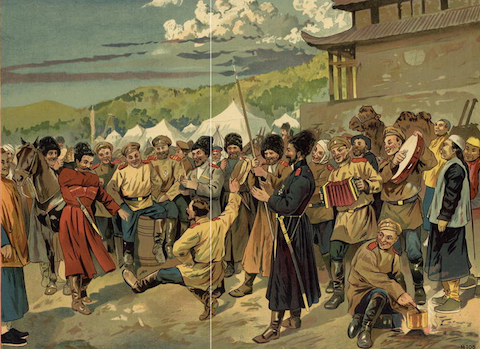
Unlike the fine fellows in the tsarist poster above, the title of which translates as "A Time for Relaxation," I ain't got time to kick back and Microkhan today. Still stuck on the second paragraph of my book's fifteenth chapter, and I need to push through that block. Acquaint yourself with some fantastic Siberian artifacts, and I'll loop back to y'all once I have a good 2,000 words or so.
March 14, 2012
The Overreach
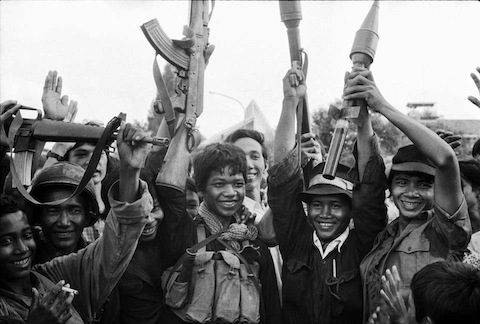
This spot-on passage from Mark Bowden's Guests of the Ayatollah is something that I'll be keeping at the forefront of my thoughts today, as I tackle an especially tricky section of my book:
Revolution gives ordinary people the false belief that they can remake not just themselves, their country, and the whole wide world but human nature itself. That such grand designs always fail, that human nature is immutable, that everyone's idea of perfection is different—these truths are all for a time forgotten. Those in the grip of righteousness saw an opportunity—no, the need—to weed the impure from their new and glorious garden.
The photo above comes from Roland Neveu's series about the 1975 fall of Phnom Penh. How you wish the smiling soldiers in those images could have heeded Bowden's words.
March 13, 2012
Hard Life in the Urals

When I first traveled in the post-Soviet world many moons ago, one thing that struck me was how all the restaurant menus listed foods by specific amounts. In Michal Kováč-era Bratislava, one did not order a small or large platter of dumplings; you either got the 200-gram size or the 500-gram size. And I have no doubt that those weights were precisely measured on a kitchen scale—a practice that was a vestige of the days of Communist rigidity.
Given how that culinary experience stuck in my mind, I was naturally drawn to this photo essay that visualizes the suggested daily food intake in Yekaterinburg, Russia. It's a salient reminder that our bodies are ultimately just machines, a fact that governments use to their advantage when resources are scarce.
Impressed by the essay, I just had to go and unearth the photographer's other work. And I'm glad I did, because Fedor Telkov boasts an impressive portfolio of images from the less salubrious corners of his native Russia. Check out his collections from Eastern Mari prayer meetings, the backwoods of the Sverdlovsk Region, and the fishing holes of the Central Urals. The captions are all in Russian, but that's why someone much smarter than I invented automatic web-page translation.
March 9, 2012
Art Amidst the Mustard Gas, Cont'd

One of the very first Microkhan posts was about so-called trench art, a catch-all term for the artifacts that (usually ill-fated) soldiers created during their World War I downtime. It's a genre I love dearly because it basically amounts to a big middle finger to madness—a way for the cannon fodder to achieve some small measure of victory over the heartless machine hurtling them to their deaths. Also, the geek in me can't help but admire the technical skill that went into creating such intricate baubles.
I was overjoyed, then, to stumble across a whole new field of trench art: handpainted helmets, many of which betray their wearers as deft with the brush. Wish I could find a larger compendium of examples, but The Tubes are yielding little this morning. I have to figure that upon returning safe-and-sound from the Western Front, many veterans tossed their beautifully painted gear; I can certainly understand how one might not wish to be constantly reminded of such a shattering experience.
Rare American examples of the craft here and here, though I suspect that the latter helmet was at least partially restored after the guns fells silent.
March 8, 2012
Considerable Exertion

Stealing a day to seal myself up in the writing cave, with the goal of getting halfway through Chapter Fourteen. Occupy your spare moments by sifting through this impressively complete collection of vintage track-and-field trading cards. The comic-book covers are also worth your time; I had no idea about Scrooge McDuck's pole-vaulting prowess.
March 7, 2012
A Detail Worth a Thousand Words
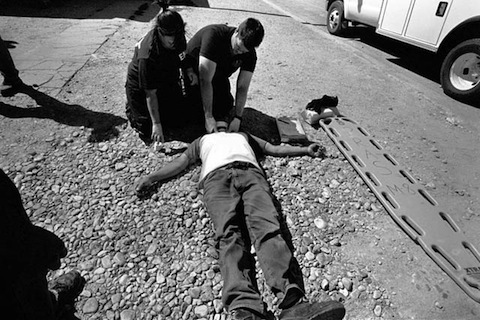
I've written before about how a single observation can elevate a work of non-fiction into the realm of true art. That is certainly the case with this New York Times dispatch from Whiteclay, Nebraska, a town infamous for providing alcohol to the neighboring Pine Ridge Indian Reservation. It's a solid piece of reporting, for sure, but the various quotes and historical backgrounders all pale in comparison to this description of a Whiteclay garbage heap:
Dozens of people in various states of inebriation wandered along the road. Other men and women were passed out in front of abandoned buildings. A Hank Williams Jr. 45, "I'd Rather Be Gone," was among the detritus along the road, as well as empty liquor bottles, a copy of "Tabernacle Hymns No. 3," soiled clothing and a dead puppy.
"…and a dead puppy." Let that image marinate in your mind for a moment. You needn't read another word of the story to feel the depths of Whiteclay's bleakness in your gut.
(Image via Lyric R. Cabral; highly recommend her "Manifest Destiny" series about Whiteclay)
March 6, 2012
Leopard, Leopard, Burning Bright
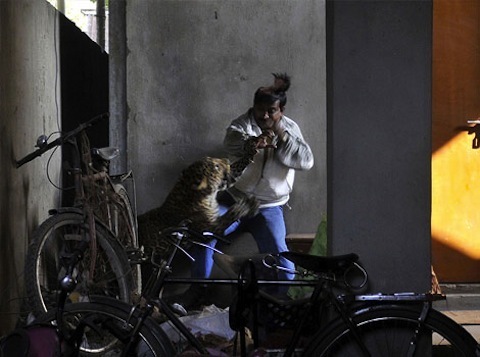
The recent kidnapping of two Assamese forestry officials may have been peacefully resolved, but the caper hints at a deepening problem in India's long troubled North-East. No, not the continued prevalence of insurgent groups that double as organized-crime outfits, but rather the bulldozing of woodlands that are the region's foremost natural resource. The forestry officials were rumored to be targeted because the Karbi Peoples Liberation Tigers (KPLT) didn't like the cut they were getting from government-negotiated timber deals.
One of the principal side effects of this increasing deforestation is something truly nasty: a huge upswing in leopard attacks on humans, even in densely populated urban areas:
Assam has seen a spurt in man-animal conflicts, particularly human attacks on leopards, over the past few weeks. Last week, villagers not only killed two leopards — one in Dibrugarh district and the other in Kamrup — but also shared their meat at both places. In the Kamrup incident, at least eight persons had been injured when two leopards attacked them in a field, following which the villagers killed one of them; the other escaped.
In Guwahati, at least five leopards have been rescued in the past two months while four have been killed. A man had also died in the heart of the city after being attacked by a leopard in January. The latest incident was on Sunday, when a full-grown leopard was injured after it fell into a well in the Boragaon, Guwahati…
"Leopards are indeed under severe threat across the state. Increasing conflict between people and wild animals, more particularly leopards, has become a major problem, especially with a section of the people violently retaliating, causing injury and even death to the animals," said S P Singh, state chief conservator of forests (wildlife). Forest Minister Rockybul Hussain said a committee has been constituted to examine how this could be checked.
Knowing a bit about how things operate in India's North-East, I can't imagine the government doing anything meaningful to help out. Officials in the region have a terrible track record when it comes to addressing the needs of ordinary citizens. They will likely be content to let vigilantism handle the problem, to the great detriment of the leopard's future.
March 2, 2012
A Different Approach

I'm a point in my book where I need to describe a cultural misunderstanding, one that has dire consequences for all parties involved. It's a tricky thing to describe, since my worldview naturally aligns with the American characters—in trying to write the scene, I keep on expressing too much sympathy for their predicament. To wriggle out of that closed perspective, then, I've been thinking about one of my all-time favorite examples of cultural explication: Yoshio Emoto's attempt to tell a Western audience why his fellow Japanese were so reluctant to surrender during World War II. Few other anecdotes about human conflict have made such a deep impression on me:
Westerners often ask me how the Japanese could choose death over surrender. I have to bring up the traditional notion of sacrifice and heroism in the defense of the nation, "Yamato Damasii." It comes largely from the spirit of the Samurai. We were taught that "Yamato Damasii" was a virtue, a fundamental principle of the Japanese people. To be taken captive was against this principle, and the biggest shame and disgrace to us. On one mission, one of the men in my unit was shot and critically wounded. He was young and had a wife and small children. I asked him whether he wanted to leave a message for anyone. He said there was no message to leave. Then he faced the direction of the Imperial Palace, threw his hands in the air and said, "Long live the Emperor!" and died. I do not think that Westerners can fully understand this behavior.
I might quibble with his last line, though. I don't think true understanding of differing worldviews is beyond our species' capacity. I just think it takes a heckuva lot of work—more than most people are willing to put in.
(Image via the truly awesome Kamikaze Images)
March 1, 2012
Long Tentacles
 I'm genuinely surprised that this story, about the attempted assassination of a dissident Uzbek cleric, has remained so off-the-radar. The victim, Obidkhon Qori Nazarov, was reportedly shot multiple times—not in his native country, but rather in the small Swedish town of Strömsund. I can't imagine the Swedes are too happy about a foreign nation's assassins operating on its turf, which may explain why they've gone to such great lengths to keep the violent incident under wraps. Few details have yet emerged, for example, regarding the assassin's modus operandi, though this United Nations dispatch claims that a discarded silencer was found near Nazarov's wounded body.
I'm genuinely surprised that this story, about the attempted assassination of a dissident Uzbek cleric, has remained so off-the-radar. The victim, Obidkhon Qori Nazarov, was reportedly shot multiple times—not in his native country, but rather in the small Swedish town of Strömsund. I can't imagine the Swedes are too happy about a foreign nation's assassins operating on its turf, which may explain why they've gone to such great lengths to keep the violent incident under wraps. Few details have yet emerged, for example, regarding the assassin's modus operandi, though this United Nations dispatch claims that a discarded silencer was found near Nazarov's wounded body.
There will inevitably be debate over whether Nazarov deserved the protection he received, as he was suspected of orchestrating violent attacks against Western targets in Uzbekistan. But the larger issue has to be Uzbekistan's tactics in its ongoing efforts to clamp down on Islamist opponents. Even the worthiest of political goals should be achieved with transparency and according to the rule of law. And that obviously ain't what's happening in Tashkent.
Related: Following the "two equals trend" rule of tabloid journalism, shall we say that Scandinavian countries aren't too adept at keeping out foreign assassins?
February 28, 2012
A Matlock Moment
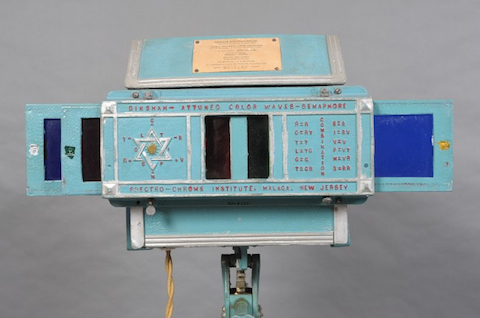
I'm a sucker for a tale in which the American legal system is asked to rule on the legitimacy of a medical treatment. No matter how dubious a quack's product, he or she can always scrounge up satisfied customers to attest to its power, as well as a few expert witnesses who will say almost anything for a buck. There is thus great drama in watching judges and jurors grapple with this deluge of disinformation—there are few truer ways to assess the current state of our nation's scientific literacy.
An all-time favorite is the 1946 trial of Dinshah Ghadiali, an oddball physician infamous for his marketing of Spectro-Chrome machines. Ghadiali swore that all manner of ailments could be cured through the application of multi-colored lights, and he convinced a fair number of gullible Americans to pay for his expensive placebo. As this 2005 account from Cabinet points out, Ghadiali had been acquitted at an earlier trial in Buffalo, thanks to the testimony of three venerable surgeons who claimed that Spectro-Chrome therapy was legit. The proceedings in 1946 might well have gone that way, too, if not for a single dramatic turn that undermined the defense in a major way:
Ghadiali called 112 satisfied Spectro-Chrome users in his defense (fifty-seven of whom merely suffered from constipation) and the trial lasted two months as a result. Some of them had become quite dependent on their machines—one woman claimed she patted and talked to hers. But Ghadiali's case effectively crumbled when a patient he claimed to have cured of epilepsy with "tonations of Orange Systemic," went into seizures on the stand, slumped to the floor, vomited, and swallowed his tongue. A real doctor rushed over to him and stopped him from choking to death by holding his tongue down with a pencil. "The jury was sent out and the court was recessed," read the FDA's notes on the trial, "Dinshah P. Ghadiali stood coldly by and neglected to offer Spectro-Chrome treatment." After seven and a half hours' deliberation, the jury returned to declare Ghadiali guilty. His dream of having a "SPECTRO-CHROME IN EVERY HOME" ended when he was given a three-year prison sentence and fined $20,000; all his promotional literature was ordered to be burnt, and further production of Spectro-Chromes outlawed.
To Ghadiali's credit, though, he fought the good fight regarding the right of Atlantic City women to bare their knees.




